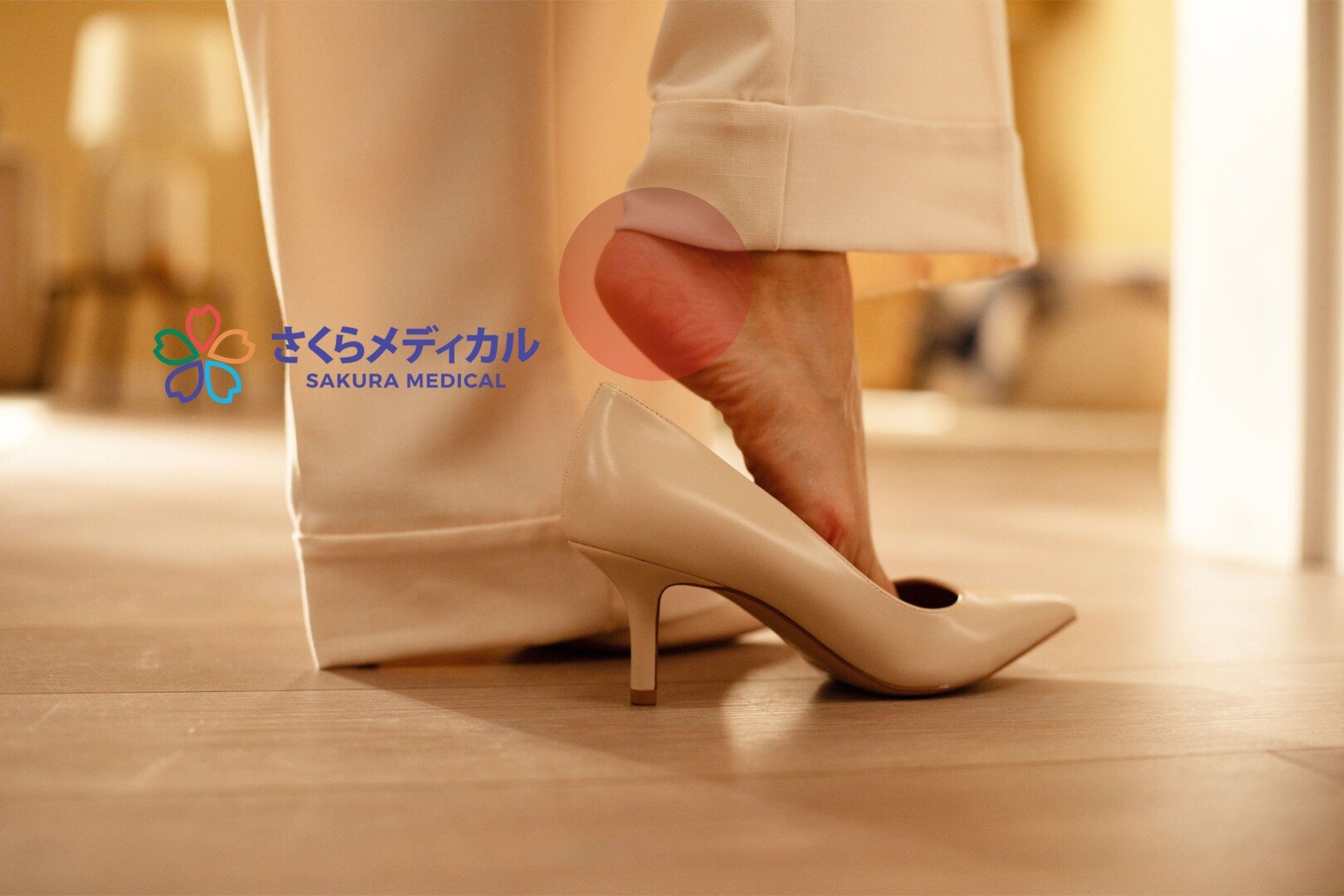The heel bears the weight of the entire body and is directly involved in walking, running and jumping activities. When there is an injury or abnormality, the heel will send a pain signal. Some common causes of heel pain include:
- Plantar fasciitis: The plantar fascia is a band of tissue that runs from the heel to the toes. When inflamed, the person often feels sharp pain in the heel, especially in the morning.
- Heel spurs: Due to long-term calcium deposits, bone spurs form, compressing soft tissue, causing heel pain when moving.
- Muscle injury or strain: Common in athletes or heavy laborers.
- Joint diseases: Rheumatoid arthritis, gout, osteoarthritis… can also affect the heels.
- Obesity, standing for long periods: Increases pressure on the heels, causing long-term inflammation and pain.
2. Warning signs of heel pain should not be ignored
If you experience the following symptoms, it is very likely that heel pain is not just a temporary condition but has progressed into a medical condition that requires intervention:
- Severe heel pain that lasts for weeks without relief.
- The pain increases when standing for a long time, walking a lot or when just waking up.
- Swelling, redness, and heat appear around the heel area.
- The pain spread to the ankle, calf, even making it difficult to walk.
- Stiff joints in the morning, need to massage or move for a while to feel comfortable.
These signs indicate that the heel may have soft tissue damage, arthritis or bone spurs, requiring examination for timely treatment.
3. Dangerous joint complications when heel pain persists
Ignoring heel pain can lead to many complications:
- Ankle osteoarthritis: Prolonged inflammation damages the articular cartilage.
- Loss of balance, incorrect gait: Patients tend to tiptoe or lean to avoid pain, which over time affects the spine and knee joints.
- Chronic inflammation: Plantar fasciitis and rheumatoid arthritis can become chronic, causing pain that recurs repeatedly.
- Limited mobility: Patients have difficulty walking long distances or playing sports, directly affecting quality of life.
4. When should I see a doctor?
You should see an orthopedic or musculoskeletal specialist if:
- Heel pain lasting more than 2 weeks without improvement.
- Pain with swelling, numbness, burning or deformity of the heel area.
- Symptoms of difficulty moving and inability to bear weight appear.
- Have a history of gout, arthritis, or previous foot injury.
Early examination helps the doctor diagnose the cause, thereby providing an appropriate treatment regimen: pain relievers - anti-inflammatory drugs, physical therapy, orthopedic braces or surgical intervention when necessary.
5. How to prevent and care for heels
In addition to seeing a doctor early when symptoms appear, you can reduce your risk of heel pain by:
- Choose suitable shoes with soft cushioning, avoid wearing high heels for too long.
- Control your weight to reduce pressure on your feet.
- Warm up thoroughly before exercising, avoid overexertion.
- Apply cold compresses or warm baths to reduce inflammation and relax muscles.
- Practice stretching exercises for the plantar fascia and Achilles tendon to increase flexibility.
Conclude
Heel pain is not just a temporary condition but can be a warning sign of underlying joint diseases. If the pain persists or is accompanied by complications, you should go to a reputable medical facility for timely examination and treatment.
At Sakura Japanese Clinic, a team of experienced musculoskeletal specialists and modern Japanese-standard equipment will help accurately diagnose the cause of heel pain, thereby building an effective and safe treatment regimen.
Contact Sakura Japanese Clinic now to make an appointment, protect your bone and joint health and prevent complications early.
Source: https://skr.vn/got-chan-dau-va-bien-chung-khop-khi-nao-nen-di-kham/































































































Comment (0)